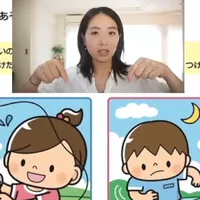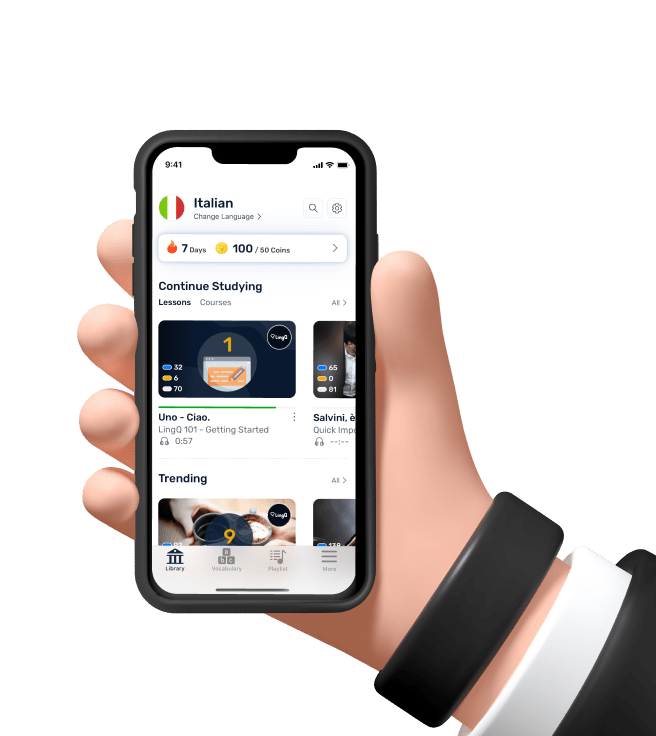Spot the Difference \#4
Erkenne den Unterschied \4}
Spot the Difference #4
Encuentra la diferencia \4}
Repérer la différence \4}
Individuare la differenza \4}
Spot the Difference \#4
Zoek de verschillen \4}
Znajdź różnicę \4}
Descobre a diferença \4}
Найдите разницу \4}
Hitta skillnaden \4}
Farkı Bulun \4}
Знайди різницю \4}
找出不同之处\#4
找出不同之處\#4
ここ に 2 枚 の 絵 が あります 。
Hier sind zwei Bilder.
Here are two pictures.
Ecco due immagini.
1 枚 、2 枚 。
1 , 2 .
One, two.
絵 が 2 枚 あります 。
Es gibt zwei Bilder.
There are two pictures.
男の子 が 1人 います 。
Wir haben einen Jungen.
There is a boy.
女の子 も 1人 います 。
Es gibt auch ein Mädchen.
There is also a girl.
男の子 と 女の子 は どこ に います か 。
Wo sind die Jungen und Mädchen?
Where is the boy and the girl?
どこ に います か 。
Wo sind Sie?
Where are they?
山 に います か 。
Sind Sie in den Bergen?
Are they in the mountains?
海 に います か 。
Bist du im Meer?
Are they in the sea?
それとも 川 に います か 。
Oder sind sie im Fluss?
Or are they at the river?
或是你在河邊嗎?
ここ は 川 です ね 。
Dies ist ein Fluss.
They are at the river.
2人 は 川 に います 。
Sie sind im Fluss.
The two people are at the river.
川 で 何 を して います か 。
Was machen Sie auf dem Fluss?
What are they doing at the river?
川 で 勉強 して います か 。
Studieren Sie am Fluss?
Are they studying at the river?
川 で 泳いで います か 。
Schwimmen Sie im Fluss?
Are they swimming in the river?
Fate il bagno nel fiume?
你在河裡游泳嗎?
何 を してます か 。
Und was machen Sie?
What are they doing?
2人 は 川 で 釣り を して います 。
Sie angeln im Fluss.
The two people are fishing in the river.
Stanno pescando nel fiume.
男の子 と 女の子 が 川 で 釣り を して います 。
Ein Junge und ein Mädchen angeln im Fluss.
The boy and girl are fishing in the river.
これ は 男の子 と 女の子 が 川 で 釣り を して いる 絵 です 。
Dieses Bild zeigt einen Jungen und ein Mädchen beim Angeln in einem Fluss.
This is a picture of the boy and girl fishing in the river.
右 の 絵 と 左 の 絵 は 同じ です か 。
Sind die Bilder auf der rechten und linken Seite identisch?
Is the picture on the right the same as the one on the left?
Le immagini a destra e a sinistra sono uguali?
それとも 違います か 。
Oder nicht?
Or are they different?
Oppure no?
違います ね 。
Nein, das ist es nicht.
No.
2 つ の 絵 は 似て います 。
Die beiden Bilder sind ähnlich.
The two pictures are similar.
Le due immagini sono simili.
でも ちょっと 違います 。
Aber es ist ein bisschen anders.
But they are slightly different.
Ma è un po' diverso.
似て いる けど 、 ちょっと だけ 違います 。
Ähnlich, aber etwas anders.
They are similar, but slightly different.
違う ところ が 8 つ あります 。
Es gibt acht Unterschiede.
There are eight differences.
8 個 あります 。
8 verfügbar.
There are eight.
8 disponibili.
今 から 私 と 一緒に 、8 つ の 違い を 探しましょう 。
Gemeinsam mit mir werden wir nun nach den acht Unterschieden suchen.
Let's look for the eight differences together with me now.
Insieme a me, cercheremo ora le otto differenze.
1 つ 目 。
1.
The first one.
女の子 は 釣り を して います 。
Die Mädchen sind beim Angeln.
The girl is fishing.
Le ragazze stanno pescando.
左 の 絵 を 見て ください 。
Sehen Sie sich das Bild auf der linken Seite an.
Look at the picture on the left.
何 が 釣れました か 。
Was haben Sie gefangen?
What did she catch?
Cosa hai pescato?
これ は 何 です か 。
Was ist das?
What is this?
魚 です ね 。
It is a fish.
魚 が 釣れました 。
Es wurden Fische gefangen.
She caught a fish.
右 の 絵 は どう です か 。
Was ist mit dem Bild auf der rechten Seite?
What about the picture on the right?
これ は 魚 です か 。
Is this a fish?
違います ね 。
Nein, das ist es nicht.
No, it is not.
これ は タコ です 。
This is an octopus.
右 の 絵 で は タコ が 釣れました 。
In the picture on the right, an octopus was caught.
2 つ 目 。
Second.
川 を 見て ください 。
Look at the river.
川 を 見て ください 。
Look at the river.
川 に 何 が います か 。
What is in the river?
左 の 絵 を 見て ください 。
Look at the picture on the left.
川 に 魚 が 2 匹 います 。
Es sind zwei Fische im Fluss.
There are two fish in the river.
1 匹 、2 匹 。
One fish, two fish.
魚 が 2 匹 います 。
There are two fish.
右 の 絵 は どう です か 。
How about the picture on the right?
魚 は 何 匹 います か 。
How many fish are there?
1 匹 です ね 。
There is one fish.
これ は 魚 です か 。
Is this a fish?
違います 。
No, it is not.
これ は 蟹 です 。
This is a crab.
魚 が 1 匹 、 蟹 が 1 匹 います 。
There is one fish and one crab.
3 つ 目 。
Third.
空 を 見て ください 。
Look at the sky.
空 を 見て ください 。
Sehen Sie sich den Himmel an.
Look at the sky.
空 に 何 が あります か 。
Was ist im Himmel?
What do you see in the sky?
太陽 が あります 。
There is the sun.
空 に 太陽 が あります 。
There is the sun in the sky.
右 の 絵 は どう です か 。
What about the picture on the right?
太陽 は あります か 。
Is there a sun?
ありません 。
Nein .
There is no sun.
ない です ね 。
Nein, das ist es nicht.
No, there is not.
太陽 じゃ なくて 月 が あります 。
Es gibt einen Mond, nicht eine Sonne.
There is not the sun, but the moon.
これ は 月 です 。
This is the moon.
4 つ 目 。
The fourth one.
右 の 絵 を 見て ください 。
Look at the picture on the right.
女の子 の 隣 に 何 が あります か 。
Was steht neben dem Mädchen?
What do you see next to the girl?
女孩旁邊是什麼?
バケツ が あります 。
There is a bucket.
青い バケツ です 。
It is a blue bucket.
女の子 の 隣 に 青い バケツ が あります 。
Neben dem Mädchen steht ein blauer Eimer.
There is a blue bucket next to the girl.
左 の 絵 は どう です か 。
What about the picture on the left?
女の子 の 隣 に バケツ は あります か 。
Is there a bucket next to the girl?
ない です ね 。
Nein, das ist es nicht.
There is no bucket.
ありません ね 。
Nein.
No, there is not.
5 つ 目 。
Fifth.
男の子 を 見て ください 。
Look at the boy.
男の子 の 顔 を 見て ください 。
Sehen Sie sich das Gesicht des Jungen an.
Look at the boy's face.
男の子 の 口 を 見て ください 。
Sehen Sie sich den Mund des Jungen an.
Look at the boy's mouth.
左 の 絵 で は 口 が 開いて います 。
Auf dem Bild links ist der Mund geöffnet.
In the left picture, his mouth is open.
口 が 開いて います ね 。
Ihr Mund ist offen.
His mouth is open.
右 の 絵 は どう です か 。
How about the picture on the right?
口 は 開いて います か 。
Is his mouth open or closed?
それとも 閉じて います か 。
Or is it closed?
閉じて います 。
It is closed.
左 の 絵 で は 男の子 は 口 を 開けて います 。
In the left picture, the boy has his mouth open.
でも 右 の 絵 で は 口 を 閉じて います 。
But in the right picture, his mouth is closed.
6 つ 目 。
Sixth.
女の子 を 見て ください 。
Look at the girl.
女の子 の 頭 を 見て ください 。
Sehen Sie sich den Kopf des Mädchens an.
Look at the girl's head.
髪 を 結んで います 。
Sie hat ihr Haar hochgesteckt.
Her hair is tied up.
我正在綁頭髮。
左 の 絵 で は 丸い ゴム で 結んで います 。
Auf dem Bild links sind sie mit einem runden Gummiband zusammengebunden.
In the left picture, it is tied with a round elastic.
左圖中,它們用圓形橡皮筋綁著。
右 の 絵 で は リボン を つけて います 。
Auf dem Bild rechts ist ein Band angebracht.
In the picture on the right, she is wearing a ribbon.
1、2、3、4、5、6。
1, 2, 3, 4, 5, 6.
6 個 、6 つ 見つかりました 。
6, 6 gefunden.
I found 6 differences.
あと いくつ です か 。
|いく つ||
Wie viele noch?
How many are left?
あと 2 つ です 。
There are two more.
還剩下兩個。
あと 2 つ 違い が あります 。
There are two more differences.
どこ でしょう 。
Wo ist sie?
Where are they?
わかります か 。
Verstehen Sie das?
Do you know?
これ は 石 です 。
This is a stone.
石 が ぴょーん 、 ぴょーん と 跳ねて います 。
||ぴょ - ん|ぴょ - ん|||
Die Steine hüpfen herum.
The stone is bouncing around.
ぴょーん ぴょーん と 跳ねて います 。
ぴょ - ん|ぴょ - ん|||
Sie hüpfen herum.
They are bouncing around.
左 の 絵 で は 1 回 、2 回 。
In the picture on the left, it bounces once, twice, and twice.
2 回 跳ねて います 。
Er ist zweimal geplatzt.
It bounces twice.
右 の 絵 で は 何 回 跳ねて います か 。
Wie viele Sprünge zeigt das Bild rechts?
How many times does it bounce in the right picture?
ぴょーん 。
ぴょ - ん
One bounce.
1 回 です 。
One time.
1 回 しか 跳ねて いません 。
Nur ein Abprall.
Only one bounce.
literally: "not more than 1 bounce"
残り あと 1 つ 。
Nur noch eine übrig.
There is only one more to go.
只剩下一張了。
これ は ちょっと 難しい です よ 。
Das ist ein bisschen schwierig.
This is a little difficult.
どこ に ある か わかります か 。
Wissen Sie, wo es ist?
Do you know where it is?
見つかりました か 。
Did you find it?
この 草 を 見て ください 。
Sehen Sie sich dieses Gras an.
Look at this grass.
これ は 草 です 。
This is grass.
こっち の 方 が 少し 下 に あります 。
Dieser ist ein wenig niedriger.
This one is a little lower.
上 、 下 。
Oben , unten .
Up, down.
草 が 下 に あります 。
The grass is on the bottom.
こっち の 方 が 少し 上 に あります 。
Dieser ist etwas höher gelegen.
This one is a little higher.
1つ 、2つ 、3つ 、4つ 、5つ 、6つ 、7つ 、8つ 。
Eins, zwei, drei, vier, fünf, sechs, sieben und acht.
One, two, three, four, five, six, seven, eight.
8つ 全部 、 違い が 見つかりました 。
Alle acht Unterschiede wurden festgestellt.
We found all eight differences.
今日 は 一緒に 間違い 探し を しました 。
Heute haben wir gemeinsam nach Fehlern gesucht.
Today we looked for mistakes together.
今日 は これ で おしまい 。
That's all for today.
また ね 。
See you soon.

